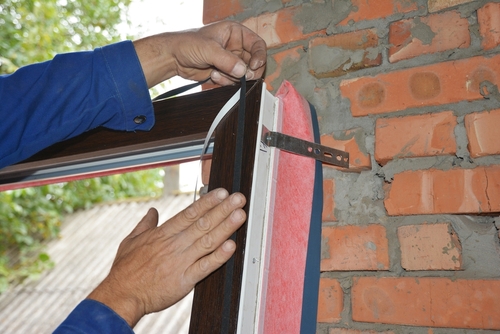Weatherproofing the exterior of your home or office is essential to protect the building from the elements, ensure energy efficiency and maintain curb appeal. Here are some key steps and tips for weatherproofing:
- Inspect and Seal Cracks: Regularly inspect the exterior walls for any cracks or gaps. Use caulk or weather-stripping to seal these openings to prevent water and air leakage. Focus on areas around windows, doors, vents, and utility openings.
- Install Weather Stripping: Weather stripping is an easily damaged or worn-out material surrounding high-use structures like doors and windows. The only difficult part is removing the old material. Once done, weather stripping’s adhesive backing makes installation fast and easy.
- Properly Insulate: Ensure your walls and attic have adequate insulation. Add-on rooms and storage areas are particularly suspicious when it comes to cold/hot deficient insulation.
- Roof Maintenance: Regularly inspect your roof for damaged or missing shingles. Repair or replace them promptly. Also, did you miss hailstorm damage? Expert and trusted roofers might find and document damage you didn’t know you had. Also, modern roofing materials are often hailstone resistant, often saving money.
- Gutter Maintenance: Clean your gutters and downspouts regularly. Remember, amateurs tend to fall off ladders.
- Landscaping: Remember to blow out the water in your sprinkler system otherwise you be very unhappy when you turn on the water next spring.
- Storm Windows and Doors: Installing storm windows and doors is a worthy investment in your home or office building. Energy savings help pay some of the fare for this substantial investment.
- Exterior Paint and Finishes: High-quality exterior paint and finishes act as a protective barrier against moisture and UV damage. There are various weatherproofing products available, such as water-resistant coatings and sealants. (see previous blog on water-proofing).
- Check for Leaks: Regularly inspect the exterior for signs of water leaks or damage. Water damage repairs are many times what you might guess they would be.
Remember that weatherproofing is most important in the fall when we are facing harsh winter weather. Investing in weatherproofing can help extend the life of your building, improve energy efficiency, and save you money on repairs in the long run. If you are unsure about some of the checklist items above, set a time to meet with your LACOSTA manager to discuss your concerns.


